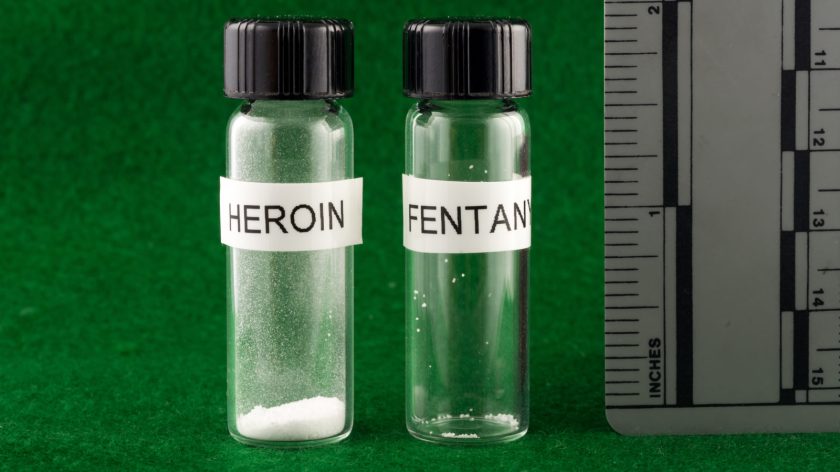Earlier today a young rapper that went by the stage name Lil Peep was found dead in Arizona. The cause of death? A coroner suspects an overdose of the anti-anxiety prescription Xanax. He was only 21 years old. The latest case of prescription drug abuse sweeping the nation among young kids. Xanax is a prescription medicine that when used correctly can treat anxiety, panic disorders, and anxiety caused by depression. It is a member of the benzodiazepines group of drugs more commonly referred to as benzos. Benzos affect the central nervous system and reduce the activity of neurons to the brain.
Xanax is increasingly becoming a commonplace in pop culture. With it’s rise as a recreational drug comes a higher rate of overdose. Xanax accounted for 31% of the prescription drug overdoses in 2013. The overdose rate has quadrupled in the period of 1999-2013 and those numbers are only steadily rising. The prescription abuse that comes with Xanax usage is overshadowed in part to the prescription opiate crisis. However, both opiates and benzodiazepines are substances that can users can easily become addicted to. Not only did the number of prescriptions in the 18 year period between 1996-2013 increase 67% but the amount of pills per prescription more than doubled.
Xanax has become increasingly popular because of the effects it has on the human body when mixed with other narcotics. Dr. Joanna Starrels a professor of Medicine at the Albert Einstein College of Medicine reported 75% of people that overdose benzos had other narcotics present in their system. Xanax when mixed with alcohol can make the user experience symptoms of drowsiness, fatigue, and clumsiness. Xanax can cause memory loss and the effects similar to “blacking out” on alcohol. The drug is broken down by the same enzymes that break down alcohol and therefore produces withdrawal symptoms similar to alcohol. Withdrawal from the drug can cause seizures, anxiety, agitation, and delirium.
Since 2010 it is reported that the overdose rate has leveled off for the general populations, however, the populations with the most rise in overdose are Blacks and Hispanics. This number could be due in part to increasing references to Xanax in hip-hop/ rap songs. A prominent rapper in the industry Chance the Rapper chronicles his issues with Xanax in a lyric from his song “Finish Line” in which he raps “Last year got addicted to Xans , Started forgetting my name and started missing my chance” Because of it’s glorification in hip-hop music and the false representation that it can’t be dangerous because it is a prescription drug the number of African-Americans overdosing from the drug is rising. In 2015 Chance the Rapper tweeted “Xanax the new heroin, don’t let em fool you”.
While Chance the Rapper dedicated parts of his last album Coloring Book to speaking about the ill effects of the drug, many other prominent rappers have continued to glorify the recreational usage of the drug as a party drug. Xanax is commonly referred to as “bars” and individuals on Xanax refer to themselves as being “barred out”. Juicy J raps in his song “Geeked up Off them Bars” about his partying experience with Xanax. He raps “I’m on them Xany bars my weed is medical… Juicy J one crazy high ass n****”.
The Migos are a prominent rap group that dominated the charts in 2017. In their song titled “Designer Drugs” one member Quavo raps “I fell in love with the drugs, I think I’m a addict, Percocet, molly, and Xanax, I feel like I land on the planet, I’m on Designer drugs, on Designer drugs, on Designer drugs”. He then goes on to rap “Sober ni**** out of style” these lyrics further perpetuate the glorification of Xanax and other narcotic abuse in hip-hop culture and make the claim that sober people are out of style.
Not only can abuse of Xanax cause withdrawal symptoms commonly referred to as worse than heroin withdrawal but they can also carry legal issues. In the state of Virginia Xanax is considered a schedule IV narcotic. Possession of a Schedule IV narcotic is a class II misdemeanor. A class II misdemeanor can result in up to 6 months in jail and a $1,000 fine. Drug possession charges can be placed upon anyone possessing Xanax without a prescription.
With the death of Lil Peep this morning November 16th I thought what better time to discuss the issues with Xanax Abuse in my blog. Just because it is a prescription drug does not make Xanax safe. The misuse and abuse of this prescription only creates a bigger hassle for those with anxiety that actually need the drug. Xanax is not just a buzzword rappers use to get more listeners on their songs, the problems that arise with misuse are real issues and must be taken seriously. Representation of this drug as a recreational or party drug in media is wrong. James Madison University is a school with a party reputation and the threat of Xanax abuse is prevalent on campus and in the surrounding area. It is important to understand the risks associated with this drug and the potential for addiction that comes along with even recreational usage.




 Countries with relaxed drug laws such as Denmark have implemented progressive approaches to clean up their streets by opening legal drug consumption rooms.
Countries with relaxed drug laws such as Denmark have implemented progressive approaches to clean up their streets by opening legal drug consumption rooms. 